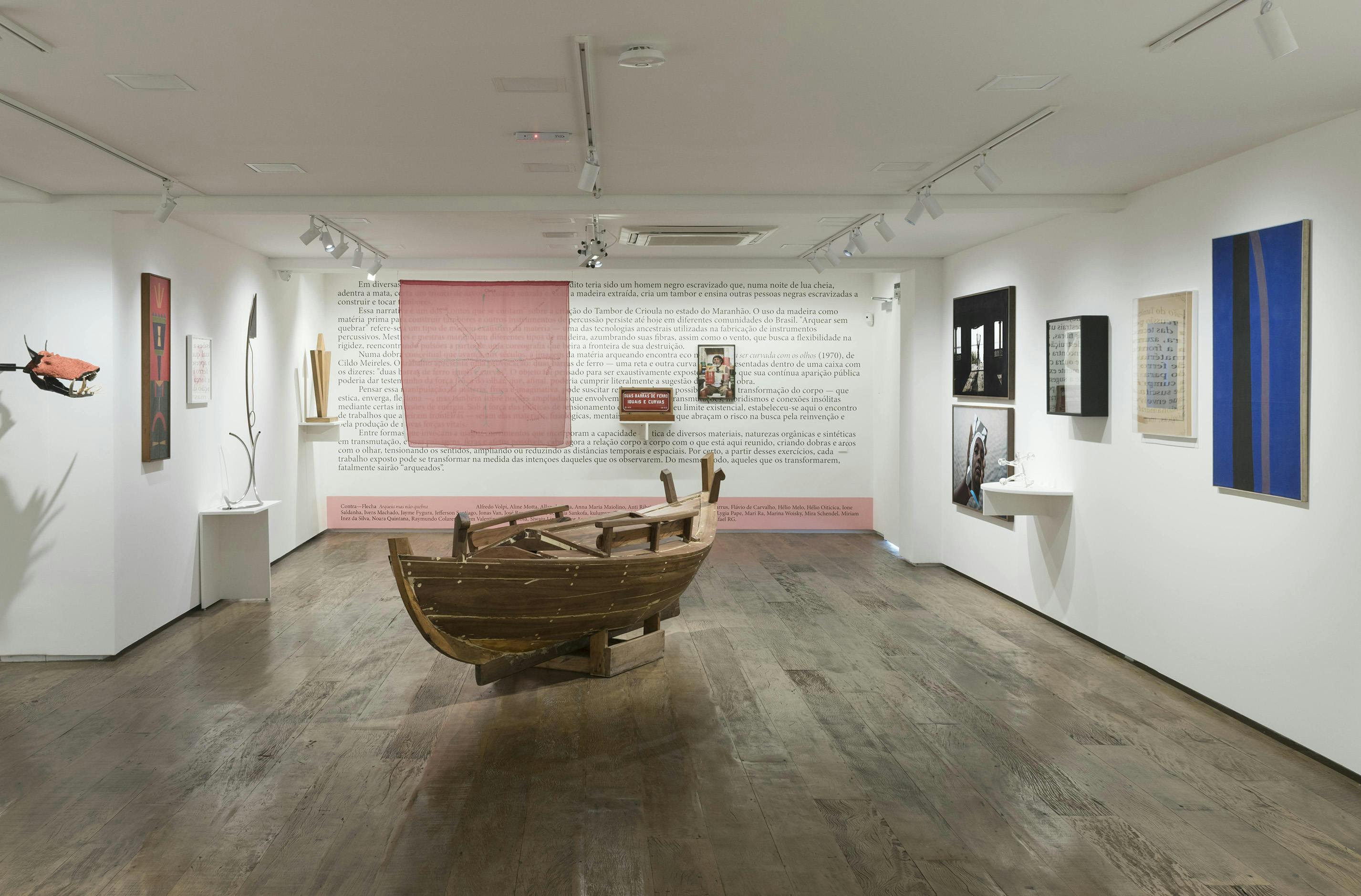
Bend But Don't BreakSP/2023
(Curators) Ariana Nuala, Germano Dushá, Rafael RG
(Artists) Abdias Nascimento, Alfredo Volpi, Aline Motta, Allan da Silva, Anna Maria Maiolino, Anti Ribeiro, Cildo Meireles, Edson Barrus, Flávio de Carvalho, Hélio Melo, Hélio Oiticica, Ione Saldanha, Ivens Machado, Jayme Figura, Jefferson Santiago, Jonas Van, José Resende, Juno B, Keila Sankofa, kulumym-açu, Labō, Laryssa Machada, Loren Minzú, Lygia Pape, Mari Ra, Marina Woisky, Mira Schendel, Miriam Inez da Silva, Noara Quintana, Raymundo Colares, Rubem Valentim, Sallisa Rosa, Siwaju Lima, Victor Arruda, Zimar
In the oral culture of Maranhão, several stories describe Saint Benedict as an enslaved black man who, on a full moon’s night, entered the forest, cut a tree trunk, returned to the slave quarters, and created a drum with the extracted wood, teaching other black people how to build and play the instrument.
This is one of the “tales that are told” about the Tambor de Crioula and its origins in the state of Maranhão, while the use of wood as a raw material to build drums and other percussion instruments persists to this day in different communities in Brazil. Thus, "bend but don’t break" refers to the exhaustive handling of matter for a purpose—one of the ancestral technologies used in the manufacture of percussive instruments. Masters and mistresses manipulate different types of wood, bowing its fibers, just like the wind seeks flexibility in rigidity, rediscovering impulses from a choreography that borders on destruction.
In a conceptual fold that advances through the centuries, the image of arching matter finds an echo in the work To be curved with the eyes (1970), by Cildo Meireles. The work presents a provocation: two iron bars—one straight and the other curved—are presented inside a box with the words: "two equal and curved iron bars". The object was intended to be exhaustively exposed, so that its continuous public appearance could bear witness to the physical force of the gaze, which, after all, could literally fulfill the suggestion of the work’s title.
This manipulation of matter, both physical and imaginative, gives rise to reflections on the possibilities of transformation of the body—which stretches, bends, flexes—, and on expanded notions involving dynamics of transfiguration, hybridisms, and provocative connections through infusions of energies. Under this force that tensions matter in its existential limit, the exhibition establishes the encounter of works that border borders—be they material, physiological, mental, or social—and that embrace the inherent risk in seeking reinvention and proposing new vital forces.
Between forms that invoke magic, movements that incorporate the elastic capacity of different materials, transmutations of organic and synthetic natures, and their landscapes, beasts, and possible affections, it is up to the body’s relationship with the works gathered to create folds and arcs with its gaze, straining the senses, expanding or reducing temporal and spatial distances. Certainly, from these exercises, each exposed work can become a measure of the observer’s intentions. In the same way, those able to unleash their gaze will inevitably come out "arched".
(1) Saint Benedict, known as “the Black”, “the Moor” and “the African”, was born in Sicily in March 1524. He became venerated as a saint in Portugal from the 16th century onwards, along with Saint Ephigenia, Our Lady of Rosary, Saint Anthony of Carthage, and Saint Elesbaan (Kaléb), forming the so-called “black devotions”, a syncretic process resulting from the Portuguese voracity in the Atlantic slave trade. In Brazil, “São Benedito” has devotees from north to south since the 18th century, and his cult is especially present in Maranhão.
(2) Tambor de Crioula is an Afro-Brazilian cultural expression that involves percussion of drums, intonation of songs and circular dance movements. It takes place in a variety of spaces and contexts, more spontaneously or linked to ephemeris and festive dates, especially in honor of Saint Benedict.

























